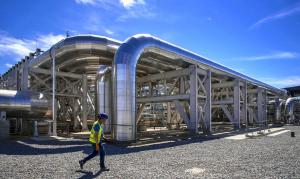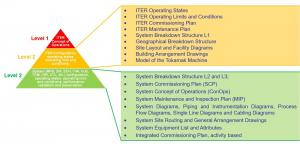Preparing ~100 System Concepts of Operation
System Concepts of Operation (ConOps) documents are used at ITER—and at other science and engineering projects—to provide information on the operation and use of the systems, focusing on modes of operation, operational processes and operator actions.
At ITER, the accountability for these documents ultimately lies with Science, Controls & Operation, where templates are developed and maintained and where the process of creating the Concepts of Operation is managed. A lead author has already been designated for the majority of the Concepts of Operation that will be produced. Lead authors are generally system experts from Engineering and Construction Domains, helped by contributing writers and reviewers from a variety of other areas, including Science, Controls & Operation, and Safety and Quality.
"The System Concepts of Operation are Level 3 documents in the Technical Baseline, underpinning information that will be part of the General Rules for Operation," explains Rossella Rotella, who coordinates their preparation. "The documents start to have a lot of good level information when system passed the Final Design Review—that's when a robust version is expected. Then, they will evolve with complementary information until the Operational Readiness Review, when we expect to have system finally configured for operation."
A few examples illustrate the purpose of these documents. There is a ConOps in preparation for the torus vacuum system that includes information on the way to pump down and maintain the system under vacuum in the vacuum vessel. The document provides information on how the system is configured to meet these key objectives and how the operator interacts with it.
A second example of a ConOps is the one describing the operation of the tokamak cooling water system, the primary circuit that circulates water in the vacuum vessel. Different configurations (modes of operation) of this system will be set to accomplish different operational goals, for example to remove heat and maintain the vacuum vessel within defined range of temperature, or to bake and to clean it. Basically, the ConOps defines how the system is configured and handled by the operator to accomplish these two objectives.
"A Concept of Operation document not only provides information on system configuration for the execution of specific tasks, but it also provides information about operational interfaces," says Rossella. "Take, for example, electrical distribution or other site service systems like compressed air and secondary cooling water that are necessary for the continuous operation of the facility. Client systems depend on them. So, we need to know how to configure both supplier and client systems, whenever an operational client or the overall ITER facility executes a specific task for commissioning or operation purposes.
Dozens of pages
Other important topics that can be addressed in ConOps documents are scarce resources (the number of events or cycles that a system component can fulfill before maintenance become necessary), system operating ranges (the boundaries under which the system has to be operated), and information about necessary consumables, tools and aids in order to anticipate the materials and warehouse space needed for operation purposes.
"Finally, in ConOps documents we must detail the number and expertise of the human resources necessary to operate the system--either sitting in the main control room, or deployed onsite for operational testing or calibration activities. This sounds like a lot of data, but we expect each Concept of Operation to be a few dozen pages, with descriptive and conceptual information and references to more detailed documents."
Completing the documents
Two drivers motivate the completion of the Concepts of Operation. The first is the system development schedule, as mature documents are expected at the Final Design Review and a complete as-is version at the turnover of systems to operation. The second driver is the preparation of the "General Rules for Operation" (Règles Générales d'Exploitation), a licensing document for the French nuclear safety regulator.
The target is to prepare the "General Rules" one year before the closure of the ITER cryostat. "Preparation for the ConOps documents began in 2020; now, they are in mass production with good progress—70% complete overall for systems that passed the Final Design Review. The target is to reach 100% by the end of 2022 and revise and complete them in parallel with the systems development, towards turnover to operation."




